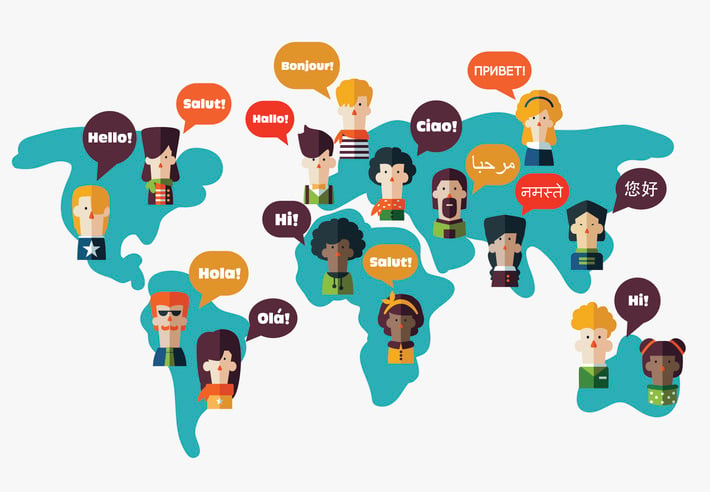Going Global: Why Paying Attention to Dialects is Critical

Suppose you're looking to translate documents for a specific audience or demographic. In that case, you will have to consider not only the language but also the dialect (or dialects) of your audience.
If this sounds like an added complication, it’s not. It’s an opportunity to gain an advantage on a competitor or gain more of an emotional bond with your customer, employee, contractor, supplier, or business partner.
At Lingualinx, as a Language Services Provider (LSP), we think about dialects all the time. We understand that translating materials or localizing into a new market can be daunting for anyone tasked with taking an organization through that process.
So, to make life easier, here’s our simple guide to why you should care about dialects and how they can help you reach your business goals.
Dialects Are Part of an Accurate Translation
In the same way that tires are part of your car, dialects are part of any translation. Do you buy your car thinking about the tires? Probably not.
But if you pick up your vehicle and there aren't tires on it, is it usable? No.
Dialects are essential in providing an accurate translation. Translation without consideration of the dialect won’t have the same impact.
Even if you’re translating legal documents that have to be accurate across an entire country, with numerous dialects, the linguists still need to decide how to translate the material. In this case, the answer may be in a safe, universal (or neutral) dialect.
What About Languages with No Universal Dialect?
This is a little bit trickier, but it just means you need to really do your homework. You’ve got to crystalize who your end audience is and what your usage goals are.
There will always be a way to tailor your language to your audience despite the wide range of potential scenarios you might be addressing. These are the common ones we see:
- Your product is moving into a new market in a new country. Your marketing team will have done their persona homework – who exactly are you talking to, and how do they like to be spoken to?
- You're hiring a new workforce or adopting an existing one to facilitate an operational base in a new country. Suppose you're engaging a workforce in the city of Putian in south-east China. In that case, you'll need to move past Mandarin and use the local dialect of Puxian Min.
- To compete in your current marketplace, you need to embrace immigration communities. For example, in Hawaii, almost a quarter of the population is Filipino, according to NBC News and the 2020 census, so the way they speak may well need to be considered within your communications.
- Legally, you need to comply with language requirements when being public-facing. The decision on dialect will likely be taken out of your hands by the government, communications, or advertising regulator. This is the case in the Canadian province of Quebec, where French Canadian language standards must be adhered to for all marketing and advertising materials, legal content, and government work.
These are all areas where your LSP can gather more information for you through their roster of linguists who are local to the country, community, and culture.
Dialects Help Your Brand Feel Loved
CSA research reports that 76% of online shoppers prefer to buy products with information in their native language. 40% of shoppers will not buy a product with information in any language other than their own. This mindset directly involves dialects, too.
Consumers, and employees for that matter, if you're opening up premises in a new country, want to feel that you've taken the time to understand them and care about their community, their culture, and their lives.
You’ll gain far more traction with your audience if you adapt to become part of their lives rather than expecting them to change and fit in with you. We see this as the fundamental principle of successful localization.
Use Dialect as Your Differentiator
The bottom line is that a lot of translations don’t take dialects into consideration. This is a big mistake, and where automation needs the human touch. Dialects can be what sets you apart from your competitors.
The reason is simple: people tend to be proud of where they're from, the language they speak, and the way they speak it. This is part of their identity and their culture. If you want to reach them, you have to embrace their identity and speak their language in their way.
You’ll get it right if you’re authentic and you embrace their dialect. They’ll feel your brand or business cares about how it integrates into their community and your message will resonate with them.
Get a Quote for Your Language Needs
To sum up, understanding the importance of dialects in translation is not just about language—it's about truly connecting with your audience. By considering dialects, you enhance your message’s relevance, build stronger relationships with your customers, and set yourself apart from the competition.
This approach shows respect for your audience's cultural identity, ensuring your communications resonate deeply.
At LinguaLinx, we excel at helping businesses navigate these complexities. With over 20 years of experience, ISO 17100 and ISO 9001 certifications, and a network of expert linguists, we ensure your message is not only translated but understood—no matter the language or dialect.
We take pride in delivering translations that are both accurate and culturally sensitive, helping you achieve your business goals.
If you’re ready to ensure your message is conveyed clearly and effectively, get in touch with us today for a free consultation and personalized quote. We’re here to guide you every step of the way.




